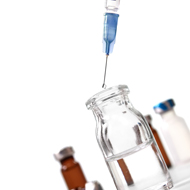
Vaccine uses unique sugar-based adjuvant
Scientists in Australia are developing a vaccine that could prevent millions of cases of river blindness.
According to The Lead South Australia, the vaccine is being developed by biotechnology company Vaxine Pty and is set for trials in 2017.
Vaxine scientific director Nikolai Petrovsky explained that the vaccine uses a two-pronged approach to effectively prevent the disease.
“First we’re looking to vaccinate the cattle, which are a breeding ground for the parasite,” he said. “Then, the other side of this is to immunise the children so if they come in contact with the parasite it blocks the infection.
“Our technology is a bit like melding a turbocharger to the engine and in this case makes the vaccine dramatically more powerful.”
According to the World Health Organisation, river blindness affects some 17 million people globally. Ninety per cent of these cases occur in west and central Africa.
Caused by the parasitic worm Onchocerca volvulus, river blindness is spread to humans and cattle by blackflies that breed in rivers. Symptoms of the disease include severe itching, disfigurative skin conditions and visual impairment - including permanent blindness.
Professor Petrovsky said the new vaccine uses a unique sugar-based adjuvant, which is safer than existing methods.
“We offer a new alternative that is not only potentially safer because it is a sugar instead of a metal/salt with high toxicity,” he told The Lead.
“Our adjuvant also works for a lot of vaccines that wouldn’t work with aluminium. The ones that tried to create an onchocerciasis vaccine didn’t take but ours actually works.”
The vaccine was developed in association with Thomas Jefferson University and the New York Blood Centre in the United States.
The team have received a grant from the US government and hope to begin tests for the cattle trial in the coming weeks.



 The RCVS has announced a new version of its 1CPD mobile app, with enhanced features for veterinary surgeons and veterinary nurses to record their continuing professional development.
The RCVS has announced a new version of its 1CPD mobile app, with enhanced features for veterinary surgeons and veterinary nurses to record their continuing professional development.